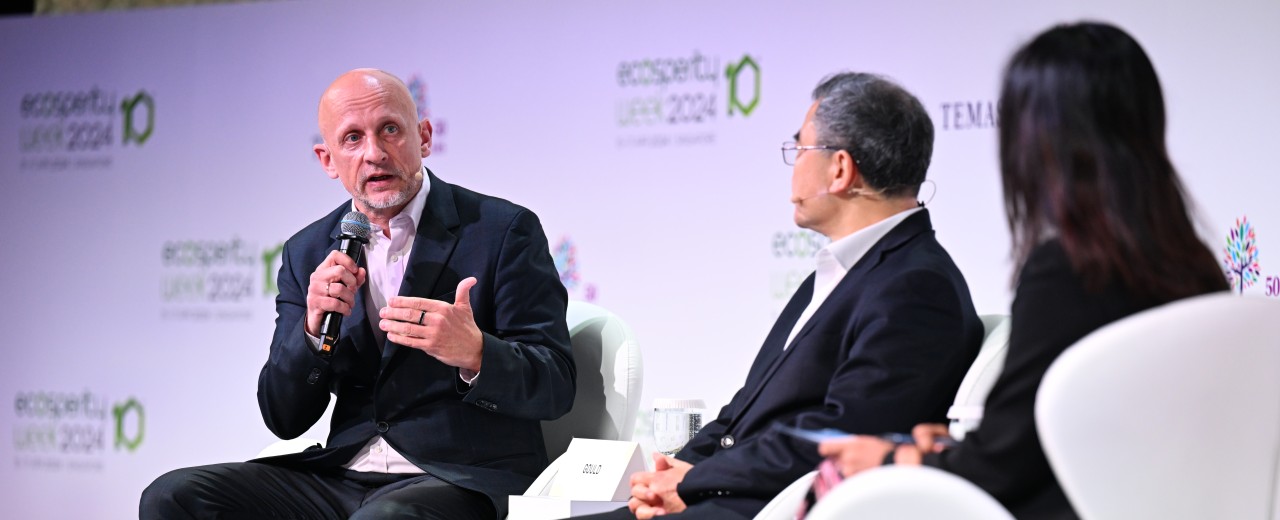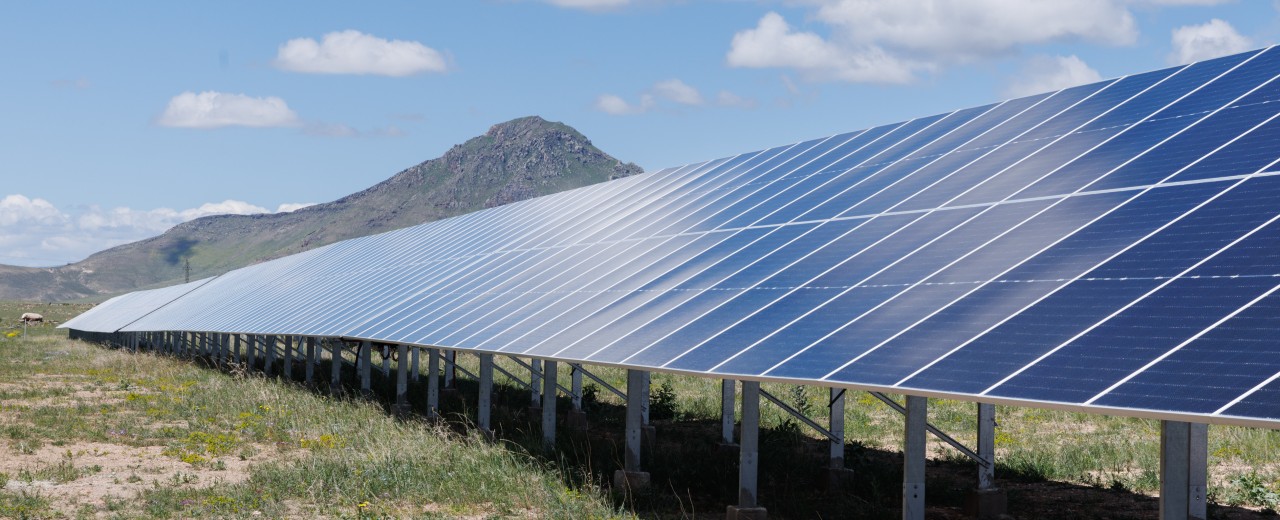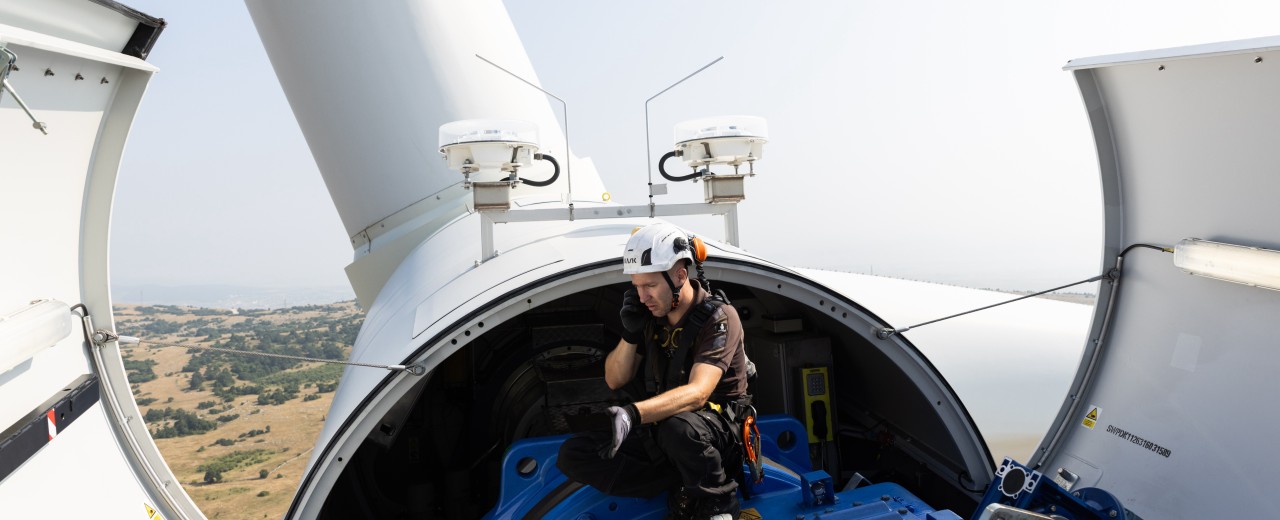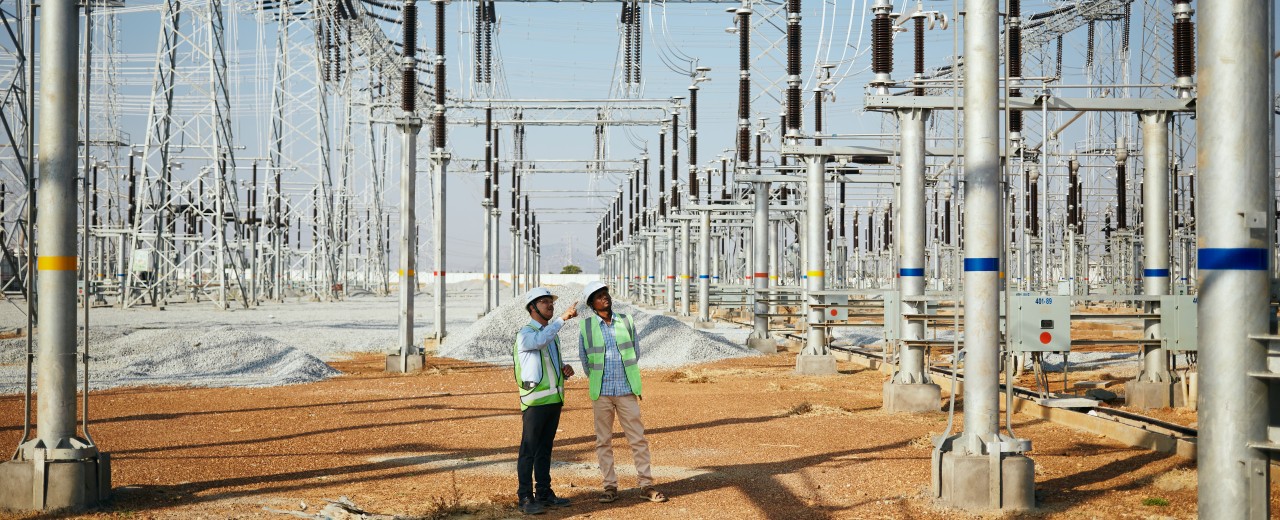Interview with Tim Gould
“Fossil fuels will peak around 2030”In an interview with Friederike Bauer, Chief Energy Economist of the International Energy Agency (IEA) Tim Gould talks about the 1.5-degree climate goal, the transition from fossil fuels and why the next phase has to focus on energy infrastructure.
Published in January 2025, updated in August 2025

In the view of the IEA it is too soon to say that the 1.5 degree limit has been breached for good. In our modeling we still see a potential opportunity – albeit increasingly narrowing – for the world to change much more quickly and for global warming to stabilize at this level. Of course, we are still a long way from where we need to be.
I wish we were in the middle, but we are not. Although there are encouraging signs concerning renewable energy, we have not yet turned the corner on emissions. Clean energy met only about one third of the growth in energy demand in 2023, the remainder was covered by fossil fuels. So, we are still in a world where demand for all the major sources of energy is rising. Given this we cannot claim to be in the middle of an energy transition. However, we are close to some very important tipping points.
The momentum behind the clean energy transition is now sufficiently strong that by the end of this decade we will see peaks in demand for each of the fossil fuels. Before that we expect to see a peak in energy-related CO2 emissions. These will be incredibly important moments in energy history. But we are not there, yet. To reach these tipping points, deployment has to accelerate considerably.
I would say the momentum is extremely powerful. The direction is clear, but we are not proceeding fast enough.
Before the pandemic slightly more than two trillion US dollars were invested each year into the energy sector – split roughly equally between fossil fuels and a range of clean energy technologies. In 2025 we are probably hitting more than three trillion US dollars of global spending on energy. Fossil fuel investment is about where it was, around one trillion US dollars. Around two-thirds of new investments are going into clean energy, including grids, storage and electric mobility. This means that clean energy projects have expanded enormously and nearly doubled in just a few years.

In addition to emission reductions, there are several factors driving this forward. A large part is driven purely by economics: renewable energy is cost efficient and can now compete with fossil energy sources, especially in the electricity sector. We are using this clean electricity in sectors such as mobility, which used to run on fossil fuels directly.
China has been a huge contributor to these changes. Some of the cost reductions have come from the very large investments and economies of scale that China has created on the manufacturing side. They now account for 70 percent of the manufacturing of the key clean energy technologies that include solar PV modules, wind, batteries, electric vehicles, heat pumps and electrolyzers for hydrogen production. Plus, they make up for a large part of the newly installed capacities of renewables, well over half in 2023.
They have not yet undergone the same level of acceleration as China or Europe.
There are of course countries like the ones you mentioned or Brazil, India, Uganda, Senegal and a few others. Yet the majority are still at the beginning. However, economics is powerful. When there are cost-effective choices that are also clean and increase energy independence – that is very convincing. So now developing countries also want to get more clean technologies into the system.
Renewable technologies are relatively capital intensive up front. Once they are installed, they are typically very cheap to run. So really, it’s a matter of investment and finance.
Good point. The traditional OECD view is that good policies produce good outcomes. There is another school of thought, however, that says you need projects and first movers, proof of concept if you will. Then administrators will take notice. I think it’s a bit of both.

There are some energy sector risks which can be detrimental, like the specifics of power purchase agreements, land issues and unclear pricing to name just a few. We often hear that developers don’t feel confident they will receive payment for the power they produce, and this pushes up the cost of capital.
The ability to secure a connection to transmission infrastructure is absolutely crucial. I truly believe that the world is moving into the age of electricity and hopefully sooner rather than later into the age of clean electricity. However, that will only work if the necessary infrastructure is in place. In fact, this is often the weakest link in the chain. We have identified 1,500 GW worth of renewable energy projects that are in advanced stages of development but missing the connection to the grid. That’s an awful lot. It’s roughly the equivalent of three years’ deployment capacities. So, in developing countries this really is the missing piece. And it is something where development banks can play a constructive role.
We need to be spending roughly similar amounts on modernizing and expanding grids as we do on new generation. If the policies are right and the regulatory framework is there, then the private sector usually can take the lead in bringing mature, cost-effective technologies into the system. But what it needs on top of that is the enabling infrastructure, including grids and storage technologies. So, we are in fact entering a new phase here.
Unfortunately, its value still gets overlooked. It needs to be more in focus. The demand side is just as important as the supply side. Energy efficiency has been talked about for a long time but in reality, it is severely lagging behind.

There are risks, of course, but on balance I see more opportunities because raw materials that are important for renewables are a way for these countries to move into the clean energy space. At the same time, it’s important that they also move up in the value chain and away from reliance on the export of raw materials, which is the case right now. The overwhelming majority of midstream processes currently take place in China. It’s not easy to compete in this sector, but if resource-rich countries identify opportunities to develop new industries on the basis of their mineral wealth they can gain great benefits.
Yes, I see these two processes as being extremely closely linked. Having a sizable domestic market pushes the change. Critical resources can and should spur countries’ interest in also becoming hubs e.g., for battery manufacturing.
Cooperation and collaboration are important ingredients in a successful energy transition. A more fragmented international system comes with risks for the speed at which ideas and new technologies are transferred around the world. So, in my opinion geopolitical tensions of whatever sort are more of a hindrance than a benefit.
Share page
To share the content of this page with your network, click on one of the icons below.
Note on data protection: When you share content, your personal data is transferred to the selected network.
Data protection
Alternatively, you can also copy the short link: https://www.kfw-entwicklungsbank.de/s/enzB33WA
Copy link Link copied